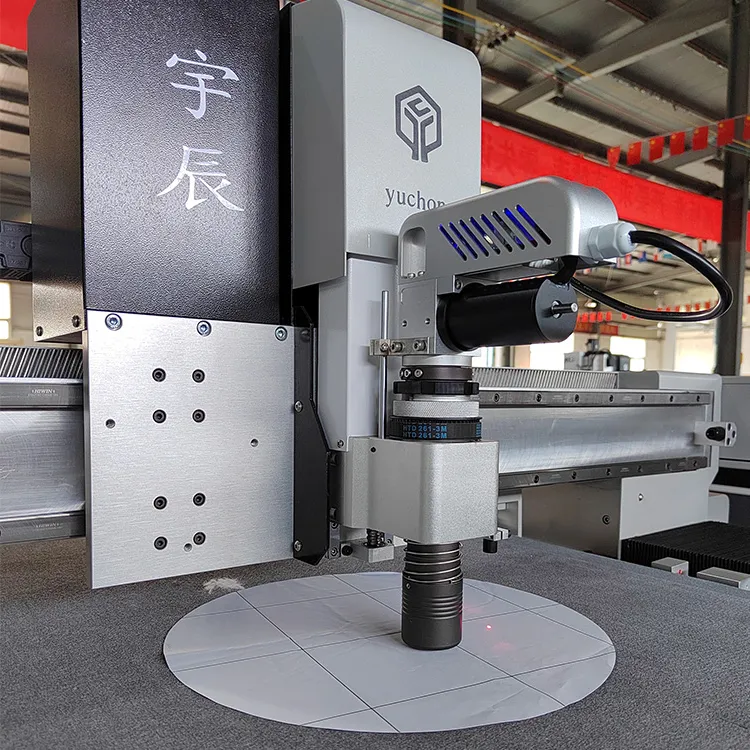The durability of the cutting blade on a CNC oscillating knife cutting machine can vary depending on several factors, including the type of material being cut, the cutting frequency, the cutting parameters (such as speed and pressure), and the overall machine maintenance.
Here are some considerations regarding the durability of the cutting blade and its replacement frequency:
- Material Compatibility: The cutting blade’s durability is influenced by the type of material being cut. Softer materials like fabrics or foams typically result in less wear on the blade compared to harder materials like plastics or composites. Using the appropriate blade type and cutting parameters for the specific material can help extend blade life.
- Cutting Frequency and Volume: The frequency and volume of cutting operations also impact blade durability. Machines that are used for high-volume production or continuous cutting may experience faster blade wear compared to machines used for intermittent or low-volume cutting. Regularly monitoring blade condition and replacing it as needed can help maintain cutting quality and prolong blade life.
- Cutting Parameters: The cutting speed, pressure, and depth settings used during cutting affect blade wear. Higher cutting speeds or pressures may cause faster blade degradation, while optimal cutting parameters can help minimize wear and extend blade life. cnc oscillating knife cutting machine automatic Adjusting cutting parameters based on the material being cut and monitoring blade condition can help optimize blade longevity.
- Maintenance Practices: Proper machine maintenance, including routine cleaning and lubrication of moving parts, can help prolong blade life. Additionally, ensuring that the cutting bed surface is clean and free from debris can prevent premature blade wear. Regular inspection of the blade for signs of wear or damage is also important for timely replacement.
- Blade Quality and Material: The quality of the cutting blade itself can impact its durability. Higher-quality blades made from durable materials like high-speed steel or carbide may last longer than lower-quality blades. Choosing blades from reputable manufacturers and following their recommendations for usage and maintenance can help ensure optimal performance and longevity.
- Operator Skill and Training: Operator skill and training play a role in blade longevity. Proper handling of the cutting machine, including avoiding excessive force or improper cutting techniques, can help prevent premature blade wear. Operators should also be trained to recognize signs of blade wear and know when to replace the blade for consistent cutting quality.
In terms of replacement frequency, the cutting blade on a CNC oscillating knife cutting machine may need to be replaced periodically based on factors such as the above considerations and the manufacturer’s recommendations. Replacement intervals can vary widely depending on usage and operating conditions but may range from weeks to months in typical industrial settings. Regular inspection and monitoring of blade condition, along with proactive replacement as needed, can help ensure consistent cutting quality and minimize downtime due to blade wear.
